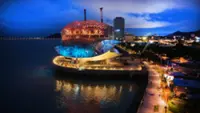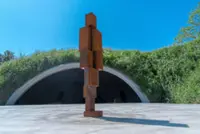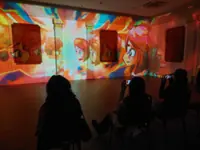One of Cloakwork's recently erased 'mini shop' murals in Kuala Lumpur. Photo: Cloakwork
This month has been a startling one for street artist Cloakwork, as authorities – KL City Hall, DBKL – have erased seven of his artworks in Kuala Lumpur. These include two from his mini shop series, two "vintage matchbox" designs, and three electricity-themed characters.
A recent online post by street artist and illustrator (real name Chern Loo), has drawn significant attention from both the art community and the public after authorities removed his artworks from these public spaces.





